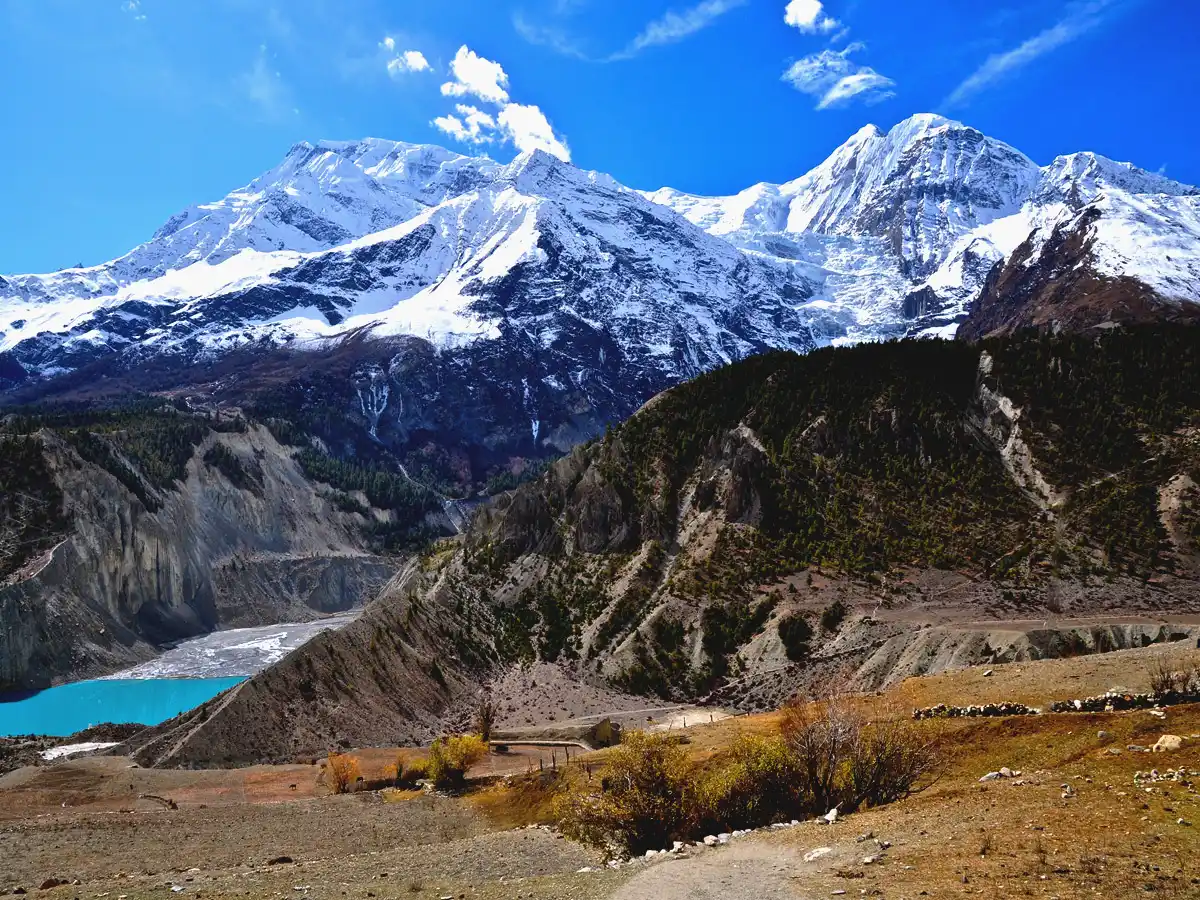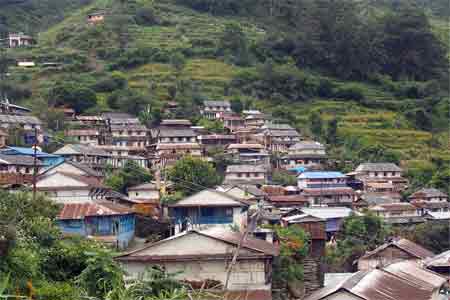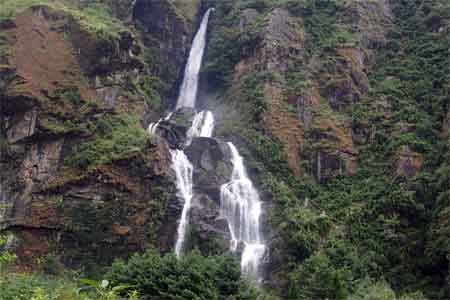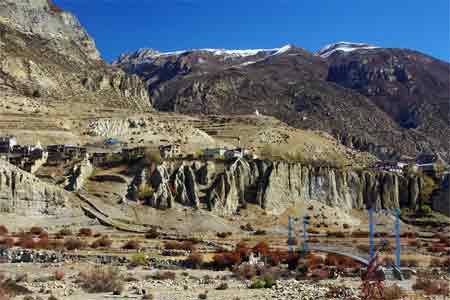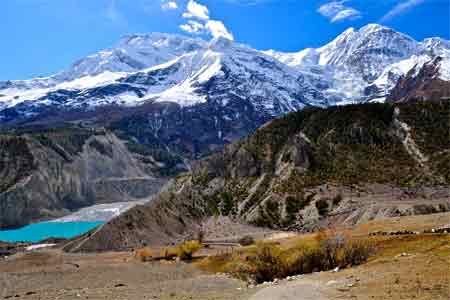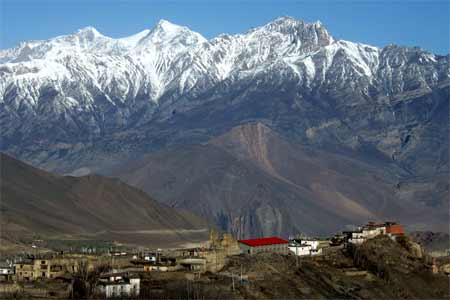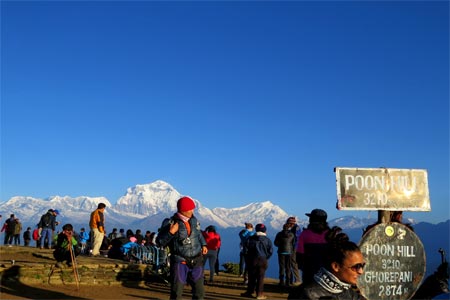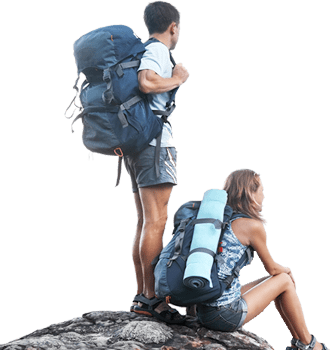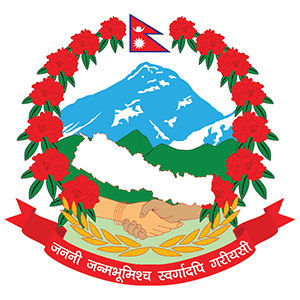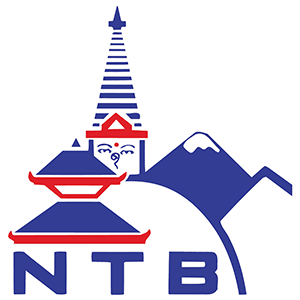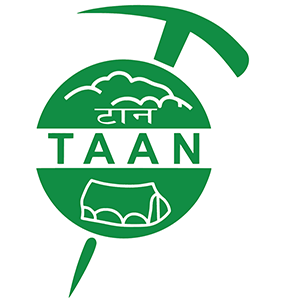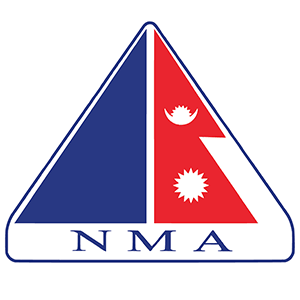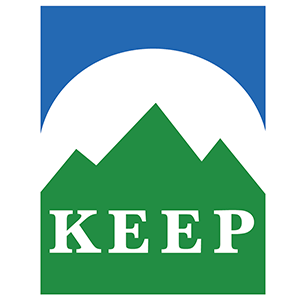Annapurna Circuit Trek: 20 Days
The Annapurna Circuit Trek is a must-do adventure in Nepal's majestic Annapurna region, which is known not only for its natural beauty but also for its diverse cultural heritage. The "Annapurna Round Trek," also known as the "Annapurna Trek," is popular because of the breathtaking views it offers and the kaleidoscope of landscapes and immersive cultural encounters it promises. This unforgettable adventure circumnavigates the Annapurna Massif, offering a profound and transformative journey through some of the world's most breathtaking scenery.
The Annapurna Circuit Trek is a well-known trekking adventure that takes travelers through four distinct regions: Lamjung, Manang, Mustang, and Myagdi. The trail starts in Lamjung, where emerald subtropical valleys surround quaint villages and terraced farms. The vibrant Hindu culture blends seamlessly with the lush surroundings, creating a vivid scene of spiritual reverence. The trail then enters Manang and Mustang, where the rocky terrain and towering peaks contrast sharply with the tranquility of traditional villages. As the journey continues into Myagdi, the landscape gradually changes, revealing a rich tapestry of biodiversity. Despite the rugged terrain and snow-capped peaks, the abundance of flora and fauna adds color to the breathtaking scenery. The Annapurna Circuit Trek provides a profound immersion into Nepal's natural and cultural heritage, leaving an indelible mark on the spirits of all who travel its legendary trail.
The Annapurna Circuit Trek begins in Tal and winds counterclockwise to Pothana, taking in natural wonders and cultural treasures. The trail begins at the formidable Thorong La Pass, which stands at 5,416 meters and provides breathtaking views of towering peaks and verdant valleys. The trail also passes through the dramatic landscapes of the Kali Gandaki Canyon, where the sheer size of the gorge is breathtaking. Charming villages and lush forests along the way provide a peaceful haven for contemplation and meditation. You will find ancient monasteries, cascading waterfalls, and glacial lakes along the route. Each step forward reveals a new aspect of Nepal's natural beauty and cultural richness, leaving a lasting impression on the soul. The Annapurna Circuit trek is more than just physical exertion; it includes natural beauty, cultural immersion, and personal challenges. It is a journey that will reverberate long after the final footsteps have faded into the distance, a testament to the Himalayas' enduring allure and the human spirit's desire for exploration and discovery.
The Annapurna Circuit Trek is an exhilarating journey that leads trekkers to Poon Hill, a majestic peak 3,210 meters above sea level. The vista provides a breathtaking view of the Annapurna Range with its snow-capped summits, including the imposing figures of Hiunchuli, Machhapuchhre, Dhaulagiri, and Nilgiri, all of which showcase the Himalayas' timeless allure. The trek also instills a deep sense of connection to nature's sublime beauty, reminding trekkers of their place in the universe.
Furthermore, the Annapurna Circuit provides a deeper narrative about cultural immersion and interpersonal relationships. Trekkers walk along historic roads, passing through quaint towns that appear to have frozen time. Residents of the area, whose lives are deeply intertwined with the region's fabric, greet them warmly and extend their hospitality. The Annapurna Circuit Trek, at its core, is a journey of self-discovery and enlightenment, a testament to the mountains' eternal fascination as well as the perennial draw of human effort. Trekkers' perspectives on the world are forever changed as they traverse the region's legendary routes and towering peaks. The incredible depth of the human soul and the profound beauty of nature inspire them.

